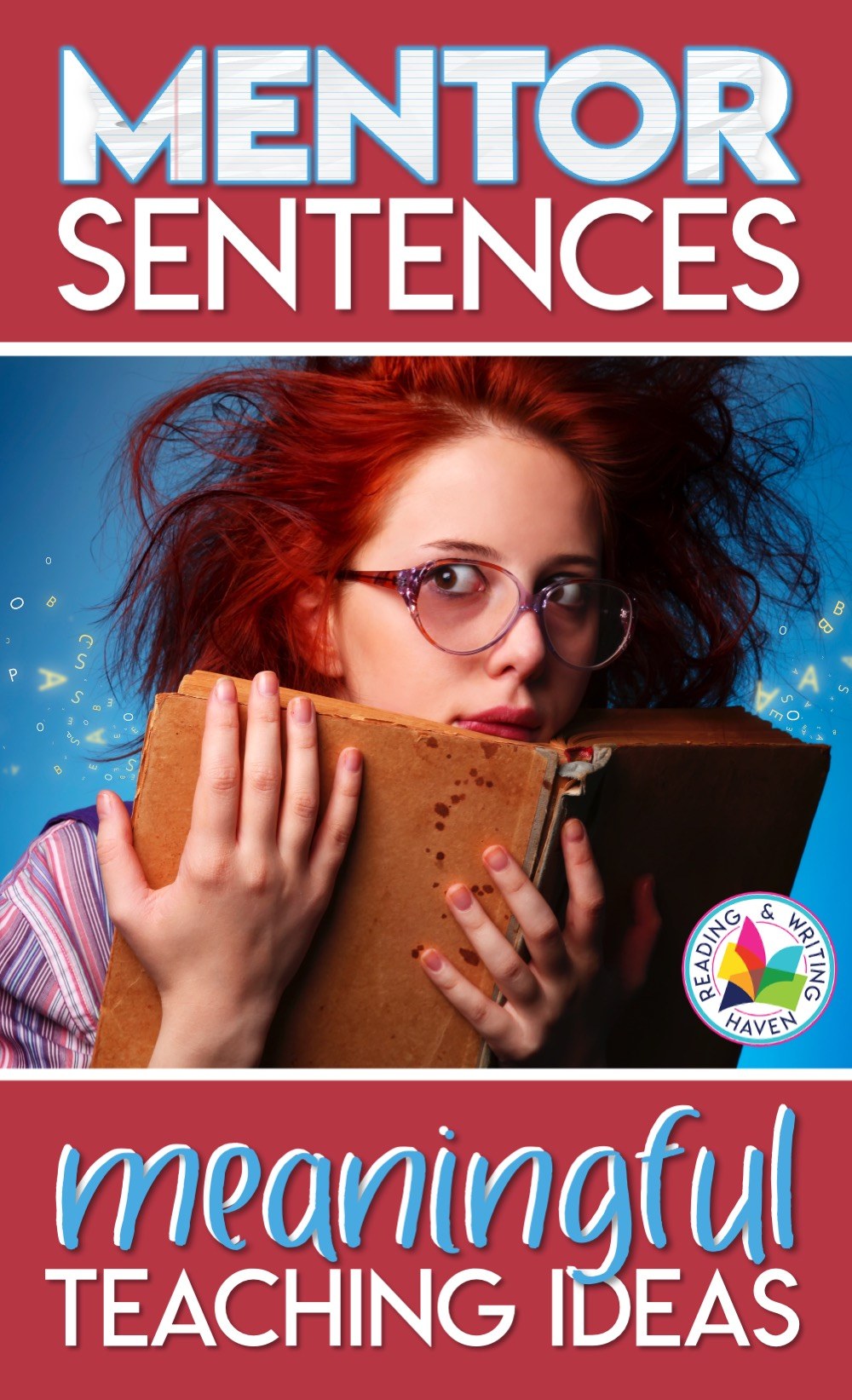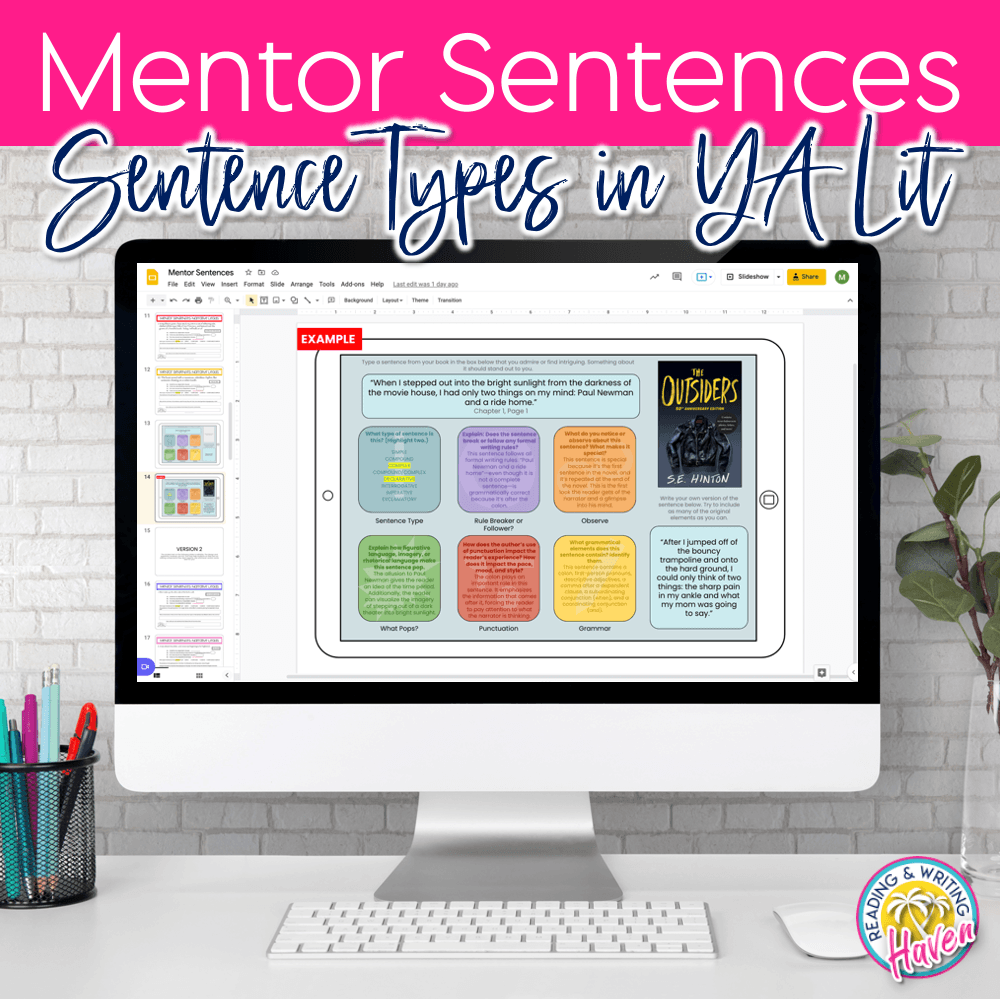Fun Ways to Use Mentor Sentences
Mentor sentences have so many potential applications for the secondary classroom. If you’ve never used them or aren’t quite sure about their value, here’s a quick run-down.
What are mentor sentences?
Mentor sentences are examples of (usually) good writing. Some break conventional rules. Those are opportunities for teachers to guide students in a discussion of how grammar can change over time. Sometimes, rules are contested and language changes. Mentor sentences provide an avenue for that discussion.
The best mentor sentences are those that clearly illustrate a grammar rule or figurative language element. This way, students can make observations, identify the components, analyze their impact, and write their own version. It helps when the example sentences are high-interest.
Why should I use mentor sentences?
In addition to allowing for conversation about the changes to grammatical conventions, mentor sentences also provide a bridge between grammar, reading, and writing. Grammar is not effective in isolation. Prepositional phrases, for instance, can be used as transitions and interruptors. Students need to be aware. They need to think about why an author might purposefully use a prepositional phrase for effect or emphasis. When students see how grammar is present in what they are reading, they become better writers.
When should I use mentor sentences?
I like to use mentor sentences after direct instruction and initial practice activities. For example, let’s pretend we give students this sentence to analyze:
“One minute the teacher was talking about the Civil War. And the next minute he was gone.” – Gone, Michael Grant
In order for students to discuss how beginning the second sentence with “and” is informal, they would first need to understand coordinating conjunctions and their formal usage. After discussing examples and direct instruction where students observe coordinating conjunctions used to combine sentences and words, it might be more obvious to them that “and” is not typically the first word of a sentence.
At that point, we could take the discussion a step further and analyze why the author might have made that choice. The short, choppy sentences, the broken thoughts – they reflect the abruptness of the teacher’s disappearance.
Of course, after analyzing mentor sentences, students should write their own as a way to practice manipulating grammar and language intentionally.
How can I use mentor sentences?
Obviously, mentor sentences make excellent discussion pieces. They can be used in whole class, small group, or individual practice formats. But, here are some specific ways you can engage students with example sentences…and they’re fun!
Study narrative leads.
Ask students to study opening lines from popular young adult books. Authors spend a considerable amount of energy developing effective hooks that will captivate readers. Students should pay attention to the grammatical elements and figurative language authors employ.
Rewrite the opening lines in several different ways as a class or in small groups. For instance:
Original: “The early summer sky was the color of cat vomit.” –Uglies by Scott Westerfeld
- 1 – The sky in the summer time is a strange shade of orange, green, and brown.
- 2 – The summer sky is ugly.
- 3 – In the morning, the summer sky is putrid.
Then, talk about which version is most captivating (in most cases, it will be the original). Discuss how the grammatical elements and figurative language devices in that version lend power to the sentence.
This exercise promotes active reading; it also helps them understand how to more effectively create leads when writing their own essays.
Have a scavenger hunt.
Mentor sentences work well with reading and writing workshop or any other independent reading formats. Give students a grammar skill or figurative language element to search for, and send them on a scavenger hunt in their choice reading texts. You can put them in small groups and give them a time limit to make the competition more engaging.
An alternate twist on a scavenger hunt would could be playing BINGO. Call out what you want students to look for in their story (a comma after an introductory prepositional phrase, a compound sentence, etc.), and play!
Make anchor charts.
Ask students to make anchor charts that reflect an important grammar concept. Give each student a different skill (parallelism, coordinate adjectives, crots and blips, etc.). Have them create a memorable way to visually display how to use that grammar term. Then, ask them to look for examples of that skill in their reading. Students can even rotate around the room to look at one another’s charts. As they do, they can browse their independent reading texts for examples of that type of mentor sentence.
Ultimately, the goal of using mentor sentences is to empower students. We want them to be able to manipulate language to become better writers and to understand grammar so well that they are more insightful readers. They help students to understand that usage and rules change and that formal conventions are sometimes contested. Mentor sentences are a powerful piece in the puzzle that connects reading, writing, and grammar.
RELATED RESOURCE:
This mentor sentence teaching resource features opening lines from high interest young adult literature. Students observe what stands out, identify the tools the author uses, and analyze the impact on readers. Click on the picture for more details.


